
- Home
- India
- World
- Premium
- THE FEDERAL SPECIAL
- Analysis
- States
- Perspective
- Videos
- Sports
- Education
- Entertainment
- Elections
- Features
- Health
- Business
- Series
- In memoriam: Sheikh Mujibur Rahman
- Bishnoi's Men
- NEET TANGLE
- Economy Series
- Earth Day
- Kashmir’s Frozen Turbulence
- India@75
- The legend of Ramjanmabhoomi
- Liberalisation@30
- How to tame a dragon
- Celebrating biodiversity
- Farm Matters
- 50 days of solitude
- Bringing Migrants Home
- Budget 2020
- Jharkhand Votes
- The Federal Investigates
- The Federal Impact
- Vanishing Sand
- Gandhi @ 150
- Andhra Today
- Field report
- Operation Gulmarg
- Pandemic @1 Mn in India
- The Federal Year-End
- The Zero Year
- Science
- Brand studio
- Newsletter
- Elections 2024
- Events
Why Mylapore is getting carpeted with kolams

Forty-five-year-old S. Radhika starts her day with drawing a small kolam outside her house in Mylapore, Chennai. It’s a habit she began when she was just eight years old. From haphazard, meaningless shapes to weaving intricate webs of designs, Radhika has spent over three decades practising and perfecting the art.But she is just one of the many women in Tamil Nadu who make it a point to draw...
Forty-five-year-old S. Radhika starts her day with drawing a small kolam outside her house in Mylapore, Chennai. It’s a habit she began when she was just eight years old. From haphazard, meaningless shapes to weaving intricate webs of designs, Radhika has spent over three decades practising and perfecting the art.
But she is just one of the many women in Tamil Nadu who make it a point to draw a kolam outside their homes as part of their daily routine.
Believed to have originated about 5,000 years ago, the kolam has two functions — religious and ornamental. Kolam, traditionally drawn using rice flour or chalk powder, decorates the entrance of homes across many parts of Tamil Nadu. Kolam is traditionally made with dry or wet rice flour, but can also be made with vegetable and mineral-based coloured powders.
It is considered a symbol of auspiciousness and serves as a welcoming gestures for visitors. While the art of drawing kolam is widely practised throughout the state, Mylapore, a culturally vibrant neighbourhood in Chennai, stands out for its Kolam festivities conducted by voluntary organisations, cultural clubs, residential associations and private firms in January.
With the onset of the Tamil month of Margazhi — December 16 to January 13 — kolams become a common sight in Mylapore, a region dotted with bustling temples and music clubs. Radhika eagerly waits for the kolam festival, organised annually by cultural clubs in the city, which attracts hundreds of kolam artists each year.
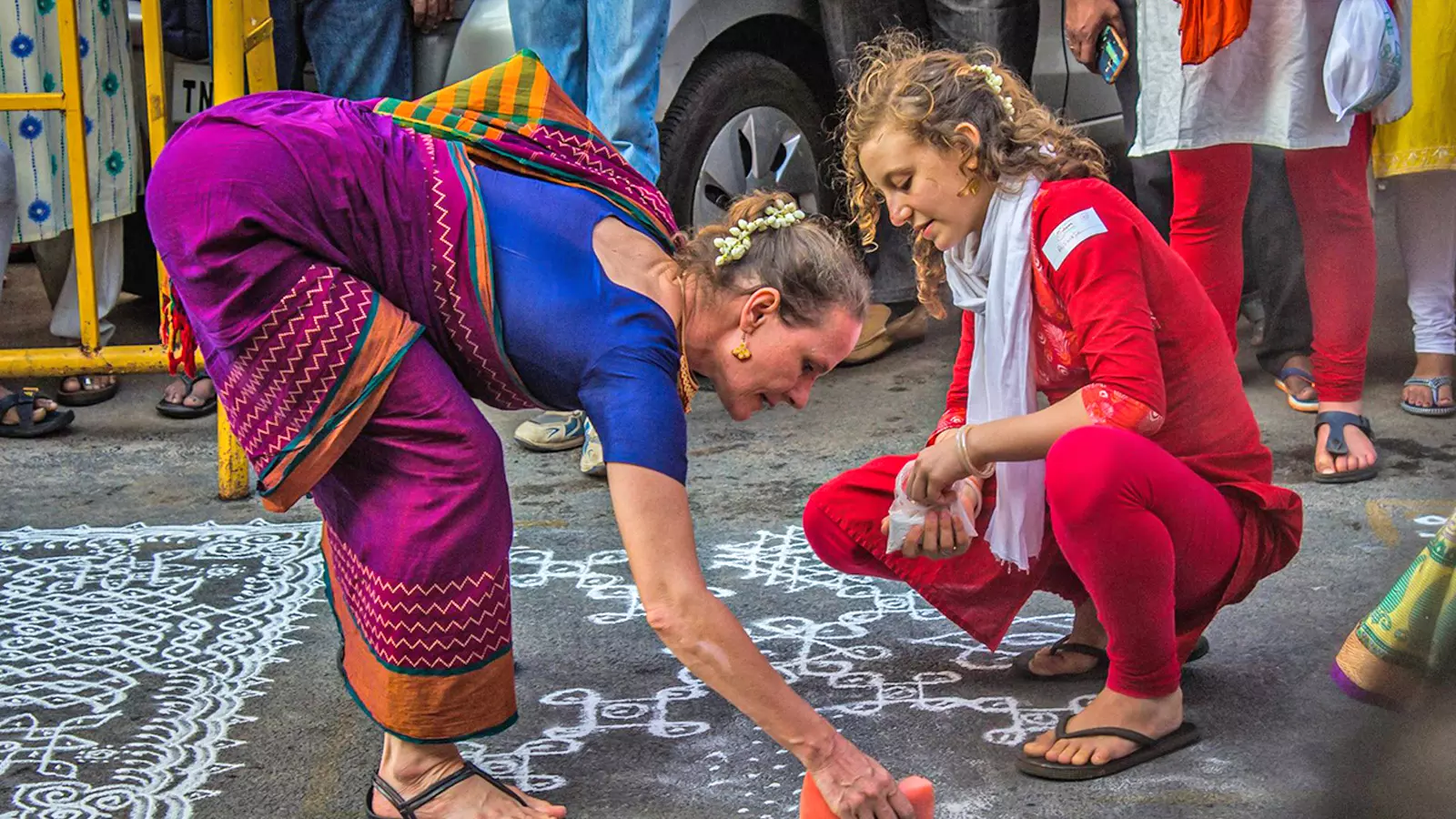
Foreigners participating in kolam festivities. Photos: Facebook/Mylapore Festival
Many streets near the famous Kapaleeshwarar Temple in Mylapore are decorated with kolams drawn by women, men, and children of all ages. The prize winners of the Mylapore kolam contest are celebrated in local newspapers as well. Radhika hopes to shine as the ‘kolam star’ this year.
“Kolam is a welcome sign that is drawn in front of a house. I feel that drawing a kolam is a positive way to begin the day. I used to replicate the kolams drawn by my neighbours when I was a child. Over time, I developed an interest and began drawing them with ease. Connecting the dots and colouring the patterns excites me even after 30 years,” Radhika shares with The Federal chuckling.
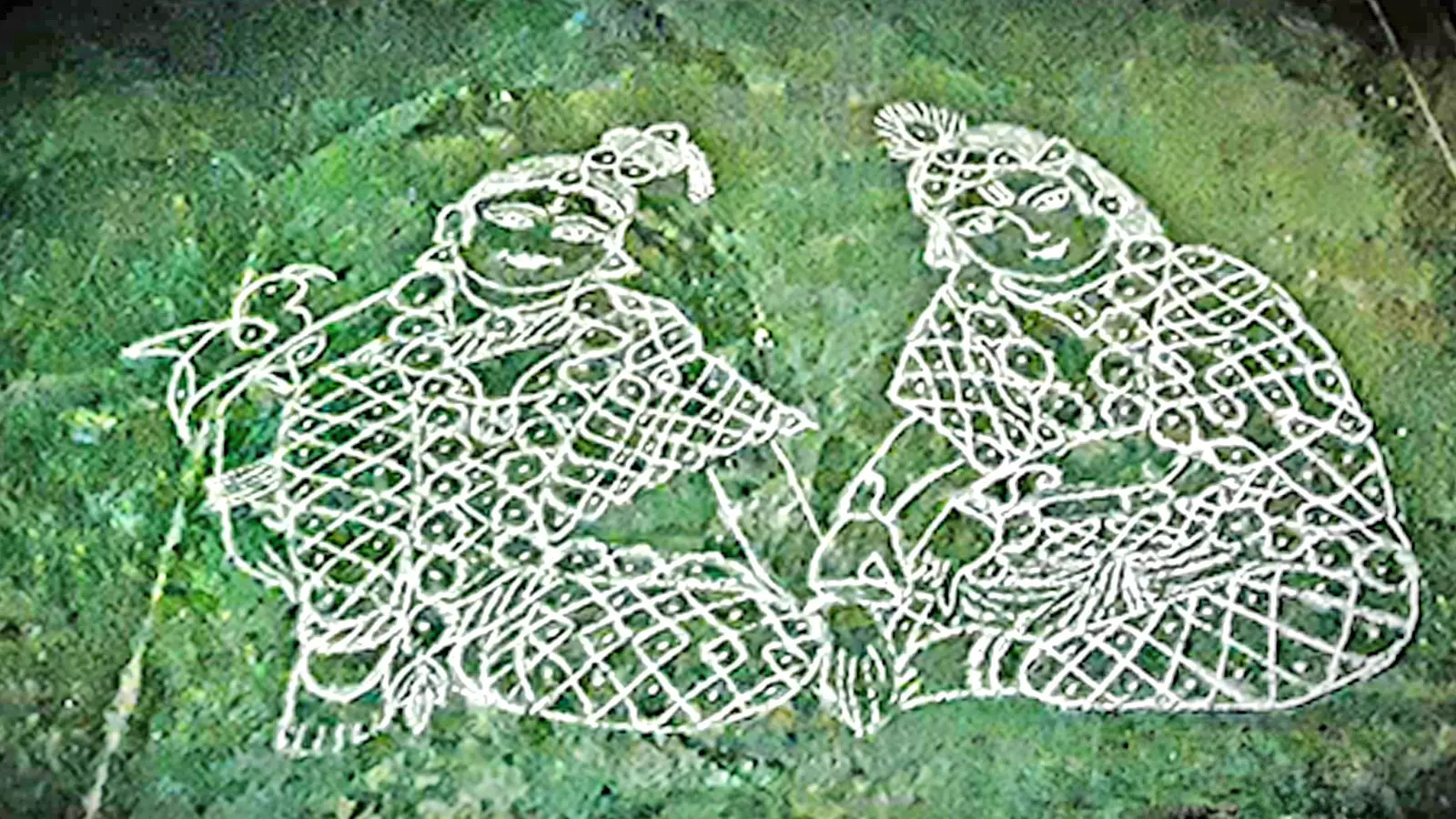
A kolam depicting Krishna and Radha.
Even as Radhika remains deeply immersed in the art, her teenage daughter, Darshini, feels it’s time for her to take over the art at home. “My daughter has been drawing kolams during Pongal and Deepavali for the last three years. The traditional kolam with many dots and colourful Rangoli will have equal space at the entrance of our house,” she says.
Experts note that kolams were originally drawn to feed birds and ants, and to invite all beings into the home. Kolams were also drawn in the belief that they would ward off evil spirits and invite positive energy. In later years, chalk powder was also used. While rangoli, the north Indian style of kolam, appeals to youths, many still prefer the traditional pulli (dots) kolams to be drawn during Margazhi.
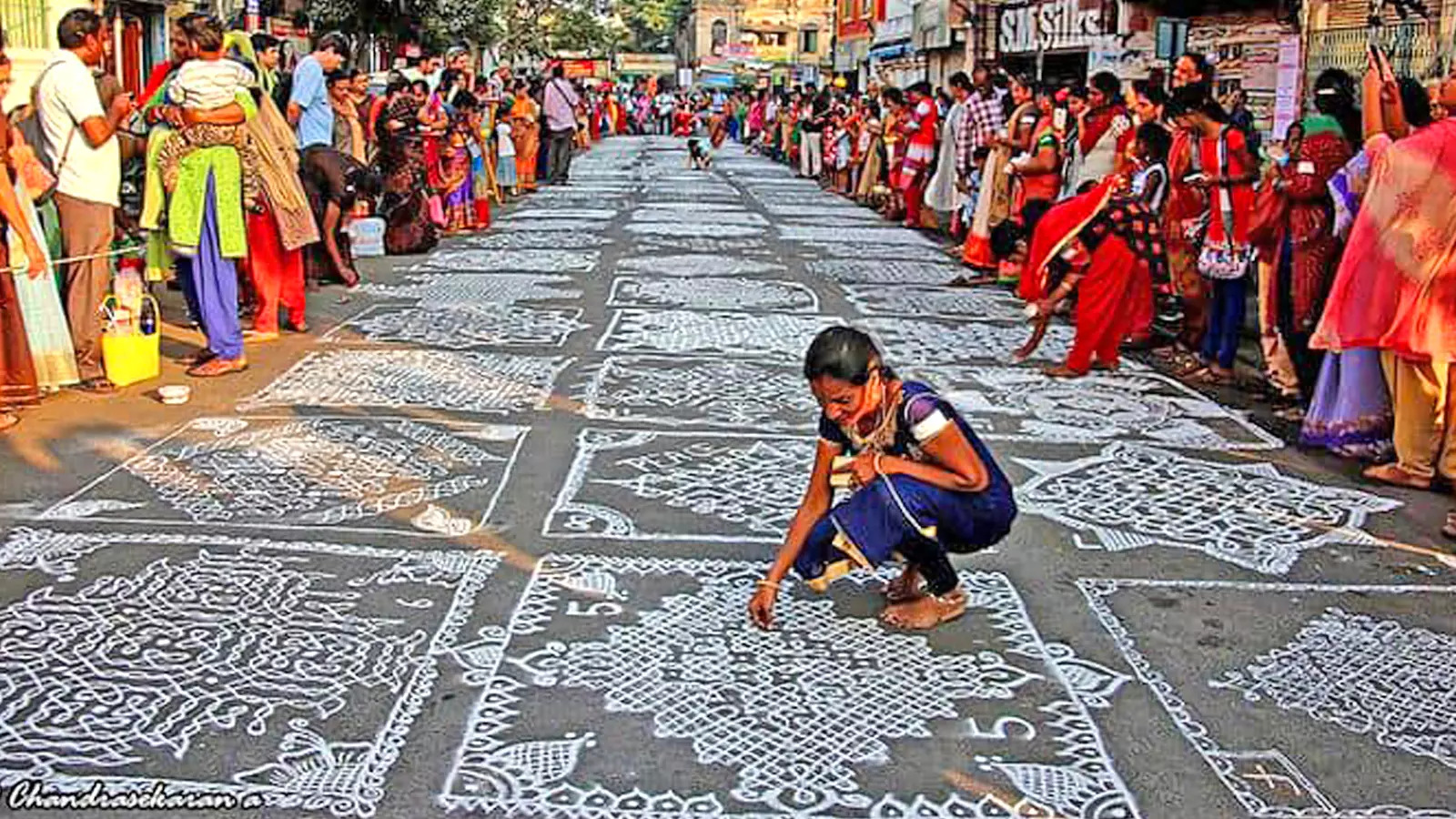
Kolams were originally drawn to feed birds and ants, and to invite all beings into the home. Photo: Facebook/Mylapore Festival
Meenakshi Devaraj, now penning a book on the history of Kolams in Tamil Nadu, shares how she became a kolam historian. Meenakshi, who initially took up Kolams as a stress-buster, now delivers lectures on traditional kolams at cultural clubs in Chennai and also conducts in-person kolam classes for children.
“There are literary references to kolams in Sangam poetry. Tamil saint and poet Andal, in her Thiruppavai — hymns written in praise of Lord Ranganatha in the 10th century — makes a reference to kolams. Andal believed that drawing a kolam was the first step to welcoming the deity of Srirangam Temple. I try to draw kolams based on Andal’s hymns,” says Meenakshi.
Her Instagram page is filled with kolams inspired by Thiruppavai songs drawn by her over the past four years. “When I started teaching the kolam art to children as a passion, many elders also expressed the desire to learn from me. I turned my stress into a positive outlet, which led me to become a kolam artist, teacher, and writer,” she proudly shares.
Explaining the difference between traditional kolams and modern rangoli, Meenakshi explains. “Pulli Kolam involves calculations and connecting dots with patterns in a precise manner. Drawing the entire kolam without lifting your finger is the tough but time-tested technique in traditional kolams. Rangoli, on the other hand, allows for additional layers and more freedom in design and colour, making it more decorative. Traditional kolams, often drawn with white powder, can still look grand.”
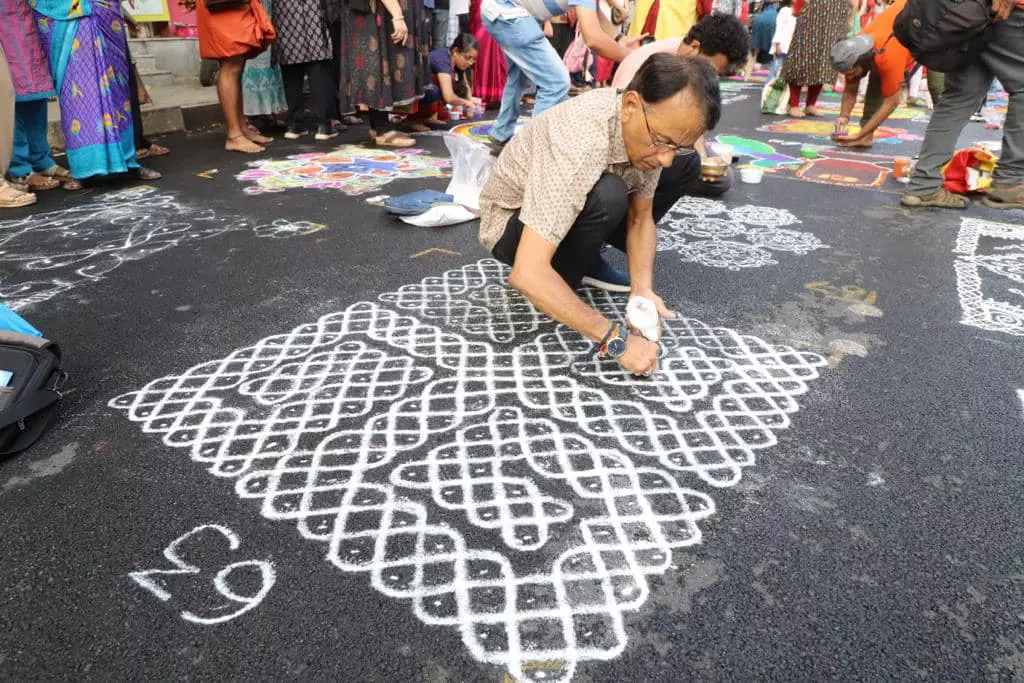
A male contestant at the Mylapore kolam contest. Photo: Vincent D Souza
She decorates kolams with images of freedom fighters on Independence Day, Lord Ganesh for Ganesh Chathurthi, and the flora and fauna mentioned in Tirupavai during Margazhi.
In addition to the Margazhi season, women take great care to draw kolams during major festivals like Pongal and Deepavali. Kolam art has also become a medium for protest in Tamil Nadu. In 2019, protesters from the 'Citizens Against CAA Group' drew kolams with messages opposing the Citizenship Amendment Act. When the police detained eight residents, including five women, for drawing kolams, many DMK leaders expressed their support by posting photos of similar kolams drawn outside their homes.
Thirty-year-old S. Pankaj draws kolams after being inspired by his mother and other family members. He recalls that he practised kolam drawing during his school days and mastered the art during annual holidays.
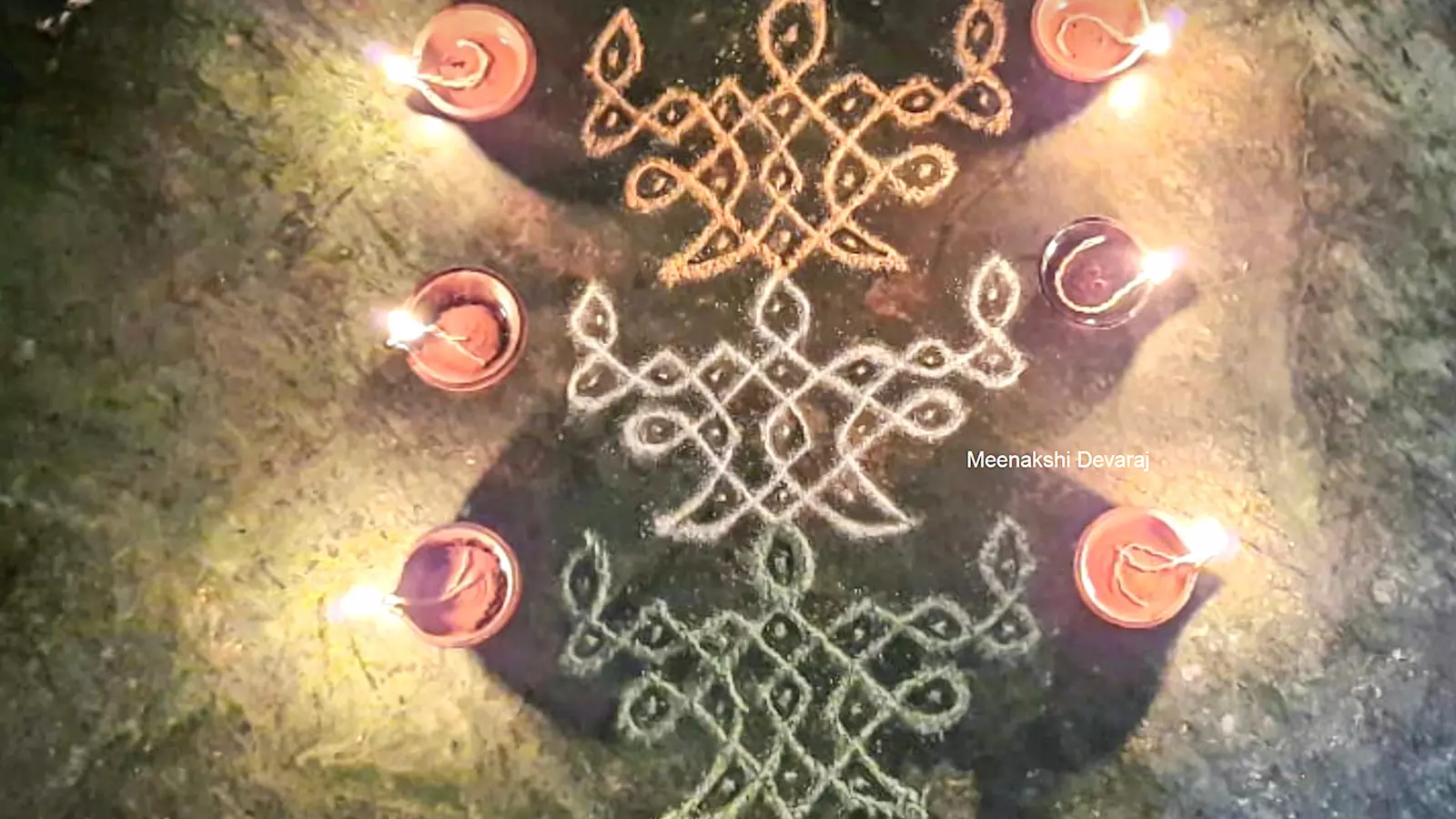
A kolam adorned with traditional diyas.
“When we had long breaks and couldn’t go out, my mother would give me a pencil and a notepad to draw kolams. Initially, I tried a few and became a big fan. I used to compete with my sister to get a large 10x10-line pulli Kolam right without missing a single dot. I also drew kolams during my college days, and it brought me closer to my female friends. I continue to draw kolams during festivals and also participate in the Mylapore Kolam Festival,” he said.
Kolam art has inspired politicians and traders in Mylapore. Mylapore MLA T. Velu has been organising kolam contests since the last three years in his constituency.
Speaking to The Federal about the uniqueness of his constituency during Margazhi, he says, “In the month of Margazhi, you can find kolams in front of every house in Mylapore. Kolams are colourful, with people of all ages—women, men, and children—drawing them. Each person looks at the kolam drawn by their neighbour and strives to draw a better one. This month feels like a festival in itself.”
When asked about the recent contest he organised, Velu says, “We conducted Kolam competitions on behalf of our party last year. Nearly 6,000 people participated in the competition. It was inspiring to see so many people expressing their creativity. We used the roads as canvases, and the streets were decorated with art. We took photos and held a grand prize distribution ceremony. Many residents have already registered to take part in the contest this year.”
R. Siddharth, a home décor entrepreneur, has named his shop 'Kolam Coffee Creations' to attract visitors to Mylapore. "Kolam is a traditional art form, and it resonates with youth today. I wanted to incorporate kolams into my products so customers can preserve them for a lifetime,” he says.
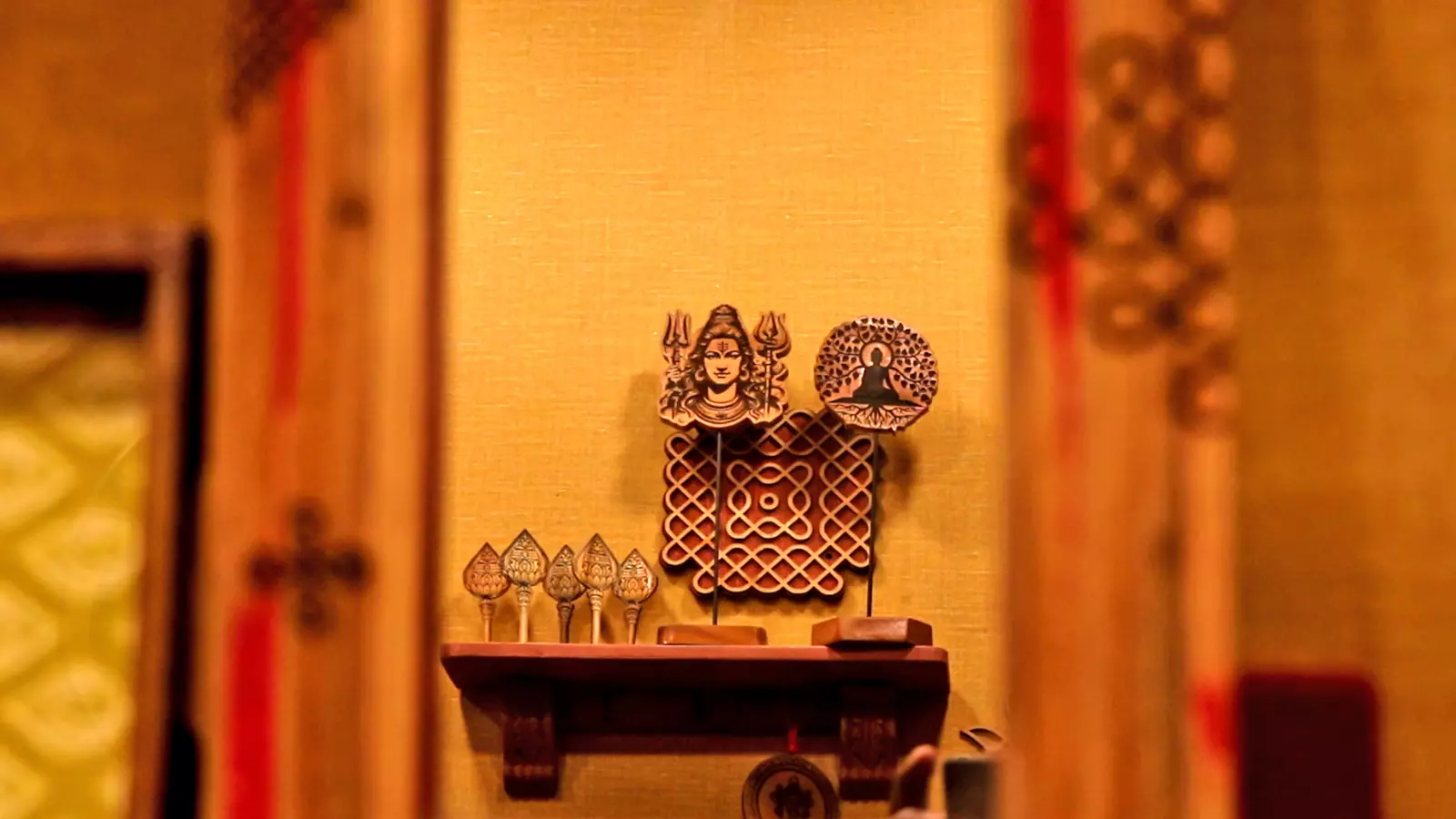
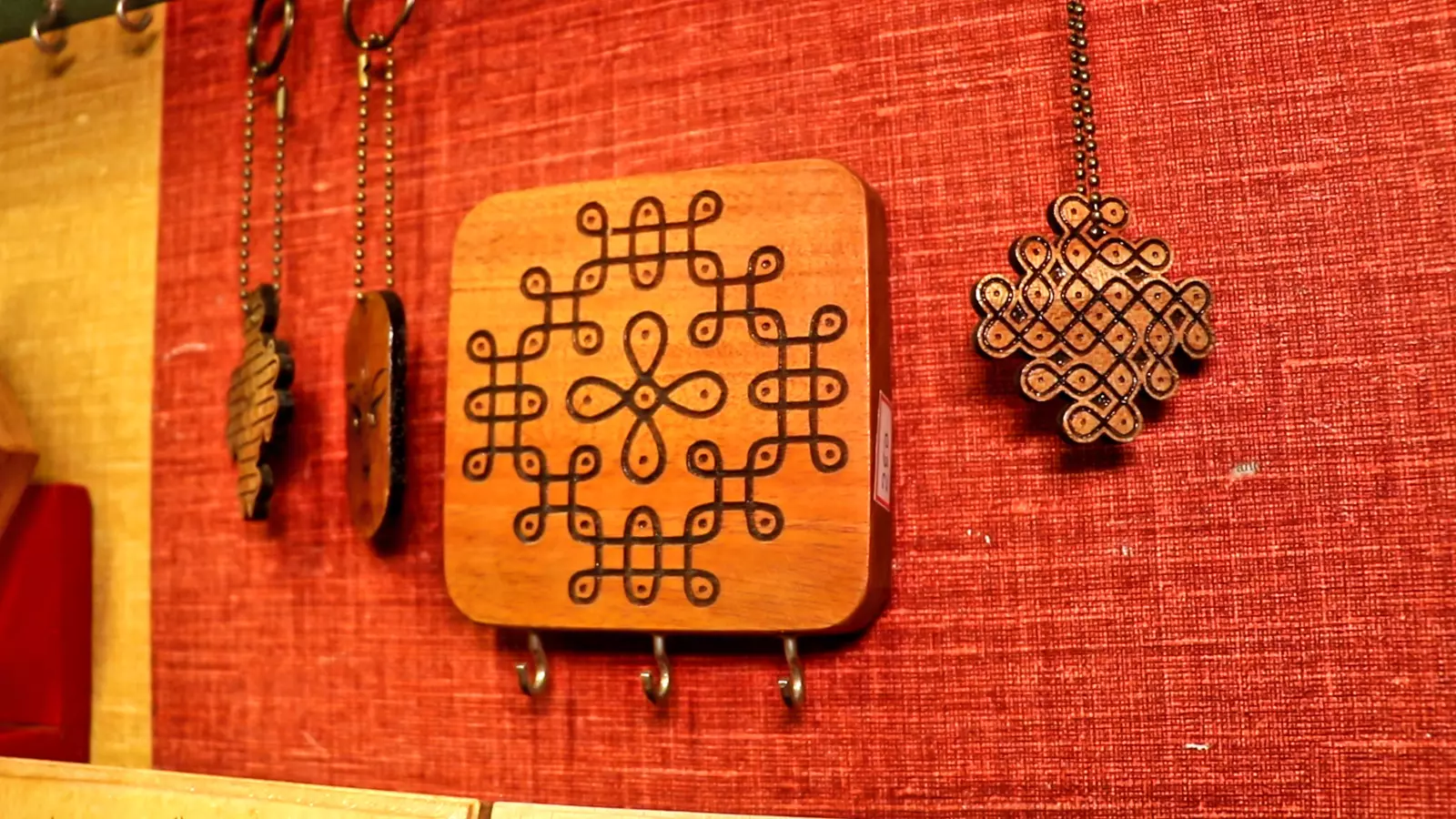
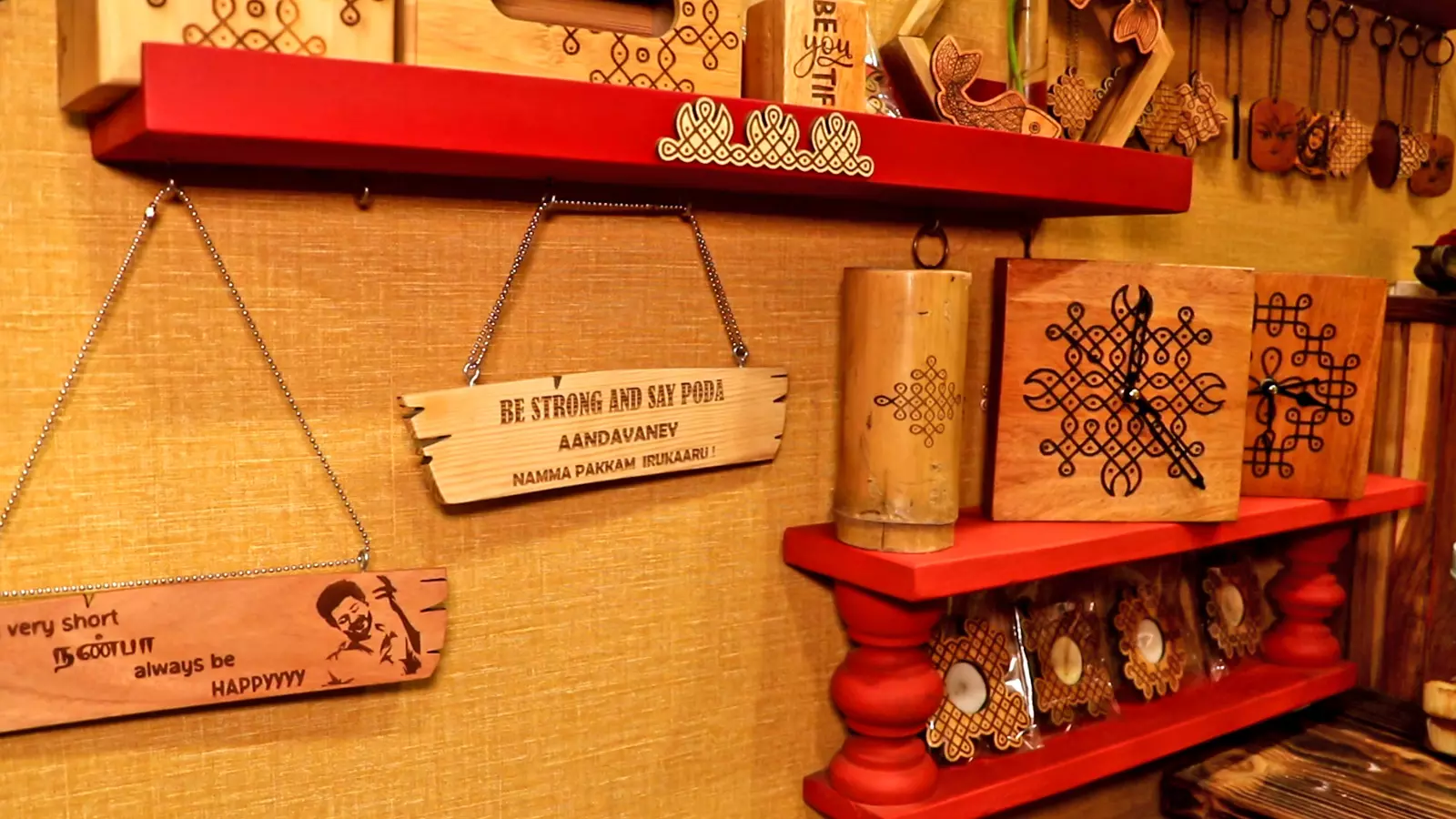
R. Siddharth, a home décor entrepreneur, has named his shop 'Kolam Coffee Creations' to attract visitors to Mylapore.
When visitors enter Siddharth’s store, they can enjoy coffee, traditional snacks, and browse home décor items like keychains, coffee mugs, mirrors, and jar lids—all featuring Kolam designs.
Siddharth’s mother, R. Shanthini, a judge for many Kolam contests, has always been an avid fan of the art. When Siddharth decided to incorporate Kolam patterns into his products, she eagerly assisted in selecting the right designs.
“During the Covid pandemic, many young people took up Kolams as a hobby, and now the art form is widespread and global,” Shanthini shares. “Kolam colours are sold online, and there are many YouTube channels that teach how to draw kolams. The traditional kolam art is being learned by Tamils in various countries through these online platforms. During the Mylapore Kolam Festival, even foreign tourists eagerly take photos and videos of the contestants drawing complex patterns,” she says.
